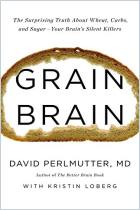Join getAbstract to access the summary!

Join getAbstract to access the summary!
Kelly Servick
The War on Gluten
Wheat sensitivity isn’t imaginary, most researchers now agree. But what’s really behind it?
Science, 2018
What's inside?
Gluten-free may be the answer to your ills, but not for the reasons you thought.
Recommendation
Millions of Americans have jumped on the gluten-free bandwagon, with mixed results. Seeking relief from symptoms such as joint and abdominal pain, diarrhea, headaches, bloating and rashes, many claim that eliminating dietary gluten has a beneficial effect. Researchers say that although most such patients don’t have celiac disease or wheat allergy, their symptoms are real, and eliminating gluten may well be a valid strategy for relief. getAbstract recommends this article by Science writer Kelly Servick to those who suffer from unexplained symptoms they suspect may be gluten-related.
Summary
About the Author
Kelly Servick is a staff writer at Science magazine. She focuses on stories about biomedical research and policy.




















Comment on this summary